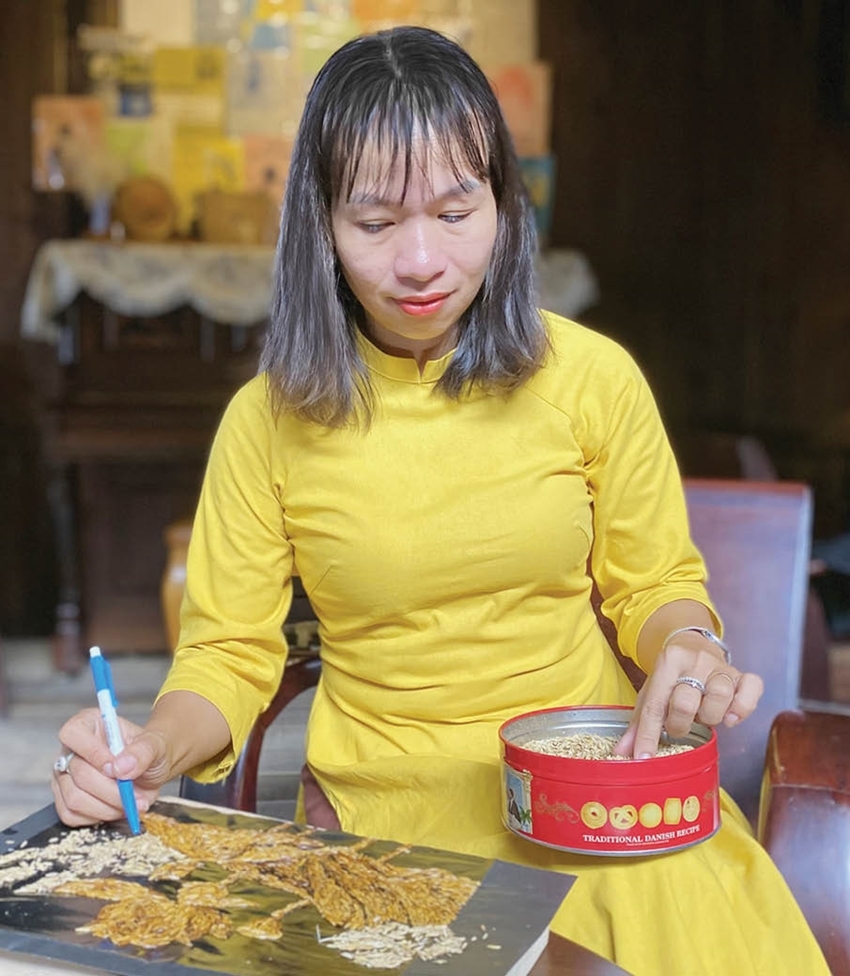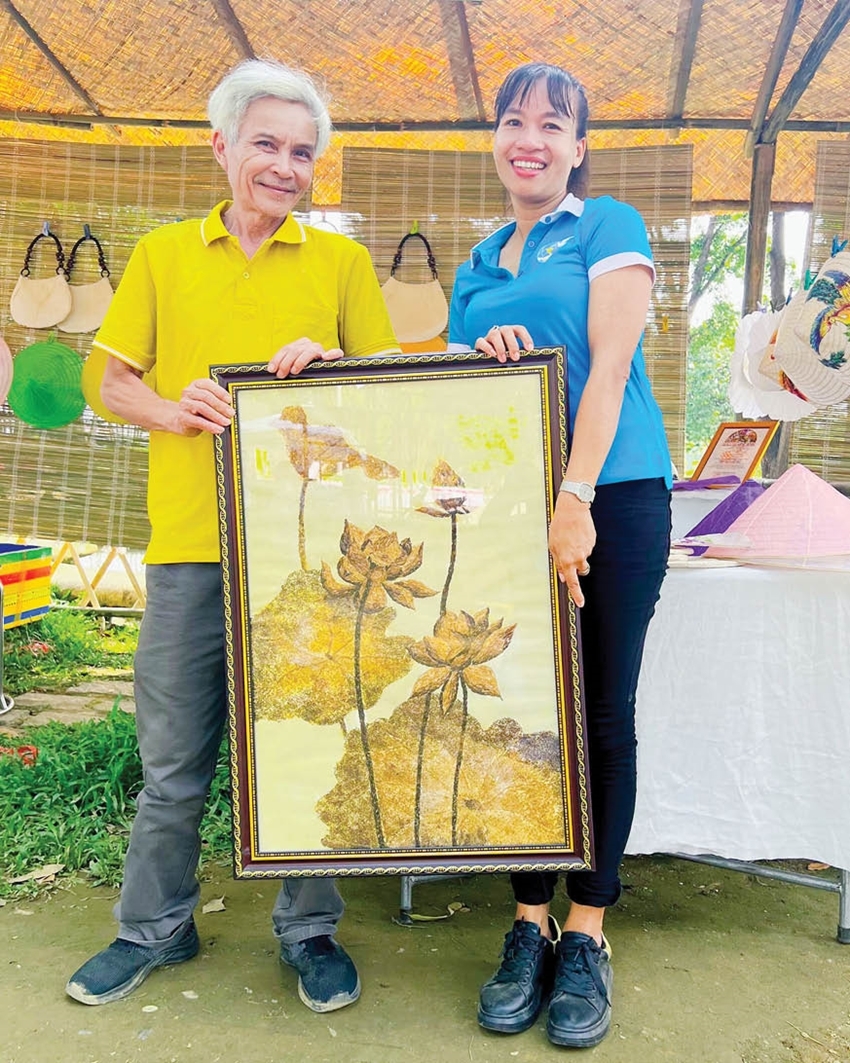 |
| Non-stop creativity with rice husks |
Creativity
Creativity was what we felt when we learned about the products Ms. Nguyen Thi Hue created. As an art teacher at Ho Van Tu Junior High School (in Huong Tra Town), Ms. Hue is not only passionate about colors, but also wants to take advantage of waste materials such as straw and rice husks to create beautiful and unique fine art products.
“In 2019, I searched for ways to turn the golden-colored, durable fibers of straw into handbags, statues, photo frames, and decorations. In 2020, in order to create a better life cycle for rice husks, an agricultural waste product, I was looking for ways to use them in paintings,” she said.
Rice husks are powerful pieces of waste. They are small and fragile, but they can withstand heat and cold very well. Moreover, rice husks are very cheap, so this is an extremely potential raw material to create paintings in large quantities.
 |
| Ms. Hue’s paintings of lotus, made from rice husks |
“I have been exploring various ways to bring rice husks into paintings since 2020. There are some ways that I adapted from the art knowledge I have learned, and there are others that I accidentally discovered. I appreciated and tried to create the most harmonious and soulful rice husk paintings,” Ms. Hue added.
To make rice husk paintings, Ms. Hue chooses rice husks of different sizes. With meticulousness and skillfulness of her hands, and with delicacy of her sense of shades and colors of each piece of rice husk, the painting was created with a background fabric, milk glue, and rice husks. “At first, I used the original color of the rice husk because I think the yellow color of the rice husk was shiny and beautiful. But to create depth for the painting, a yellow color alone is not enough. I wanted to create color arrays that needed emphasizing without using other colors, I applied the knowledge of lacquer painting, and thereby making variations to create more colors for the rice husk.”
Based on the technique of creating shades for eggshells in lacquer paintings, Ms. Hue came up with a way to roast rice husks to create dark yellow, cockroach yellow, brown, and black. Sticking each piece of rice husk on the background covered with milk glue, she created unique paintings such as paintings of lotus and beautiful and eye-catching paintings of Thien Mu Pagoda. Especially, she even spent several days completing paintings that require a lot of efforts.
Significance
In addition to knowledge of art, Ms. Hue also researched different ways to use rice husks for paintings. She said: “I discovered by accident that ground rice husks have a unique beauty. Therefore, while I was shaping the leaves in the painting of lotus, I sprinkled the ground pieces into the painting depending on the density of rice husks in each area. The visual effect made by ground rice husks was beyond expectation. The thin husk fibers accidentally become leaf veins, and the shell fragments also made a vivid mottled effect.
As a new product, Ms. Hue's rice husk paintings are very popular with customers. They love the paintings not only for its feat, but also for the simplicity of the color of rice husks. The message of environmental protection and the strange effects of this agricultural waste also bring about an unusual appeal to the painting.
Mr. Hung, who bought a painting from Ms. Hue, said: “I love the painting for its creativity, uniqueness and novelty. The yellow color of the rice husk is beautiful, and the painting arrangement is harmonious, and delicate. I’m fond of Ms. Hue's paintings made from rice husks.”
In the long run, in addition to creating paintings from rice husks, Ms. Hue will continue to find out more applications from rice husks such as table lamps and souvenir products. For her, creating rice husk paintings is not simply about creating beautiful, highly applicable products, it also conveys messages about protecting the environment, and taking advantage of available raw materials. It is also the belief in her own creativity. Once effort is constantly made, good results will come.